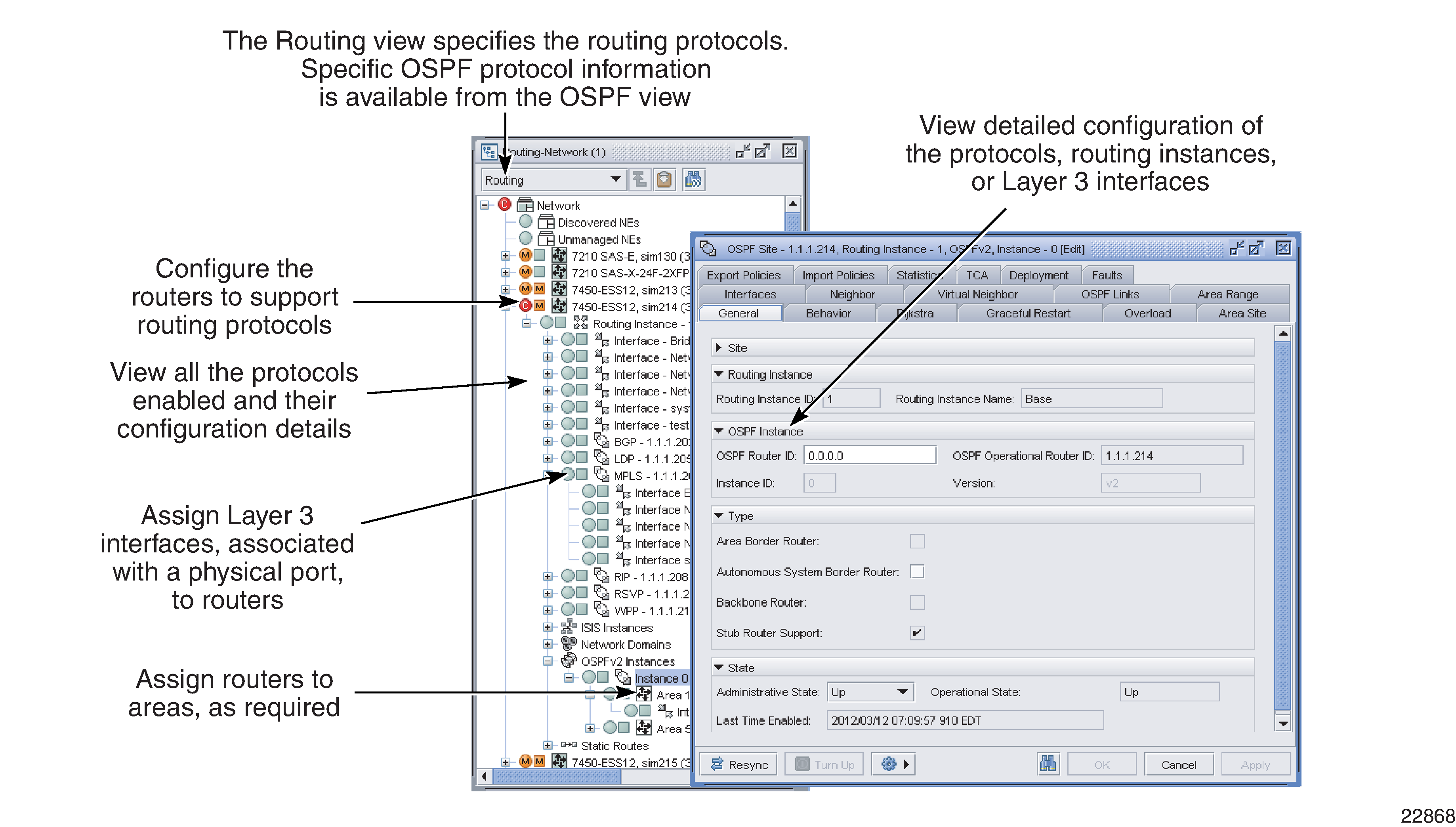OSPF configuration overview
Overview
The NFM-P supports the configuration of OSPFv2 and OSPFv3 on supporting NEs.
Configuration planning is essential to organize OSPF areas, interfaces, and virtual links. OSPF provides defaults for basic protocol operability. OSPF configuration requires, as a minimum, that:
-
you create a single OSPF backbone area that contains the area border routers.
-
for larger networks, you create several areas that contain the other routers.
-
for smaller networks, you place all routers in the OSPF backbone area.
Use the NFM-P navigation tree to configure the OSPF parameters. The following figure shows the OSPF view in the navigation tree.
Figure 28-8: OSPF view

The OSPF parameters that are required for OSPF deployment are:
-
Router ID — Each device that runs OSPF must be configured with a unique router ID. The router ID is used by the OSPF and BGP routing protocols in the routing table manager. When you configure a new router ID, protocols are not automatically restarted with the new router ID. You must shut down and restart the protocol to initialize the new router ID.
-
An area — At least one OSPF area must be created. An interface must be assigned to each OSPF area. The types of OSPF areas include a backbone area, stub area, and NSSA.
-
Layer 3 interfaces — A Layer 3 interface is the logical IP connection between a router and one of its attached networks. A physical interface is associated with the Layer 3 interface to provide the cabled connected to another device. A Layer 3 interface has state information from the underlying lower-level protocols and the routing protocol. A network interface has an associated IP address and mask that combine to create an IP prefix, unless the interface is in an unnumbered, point-to-point network.
The following procedures describe how to configure OSPF.